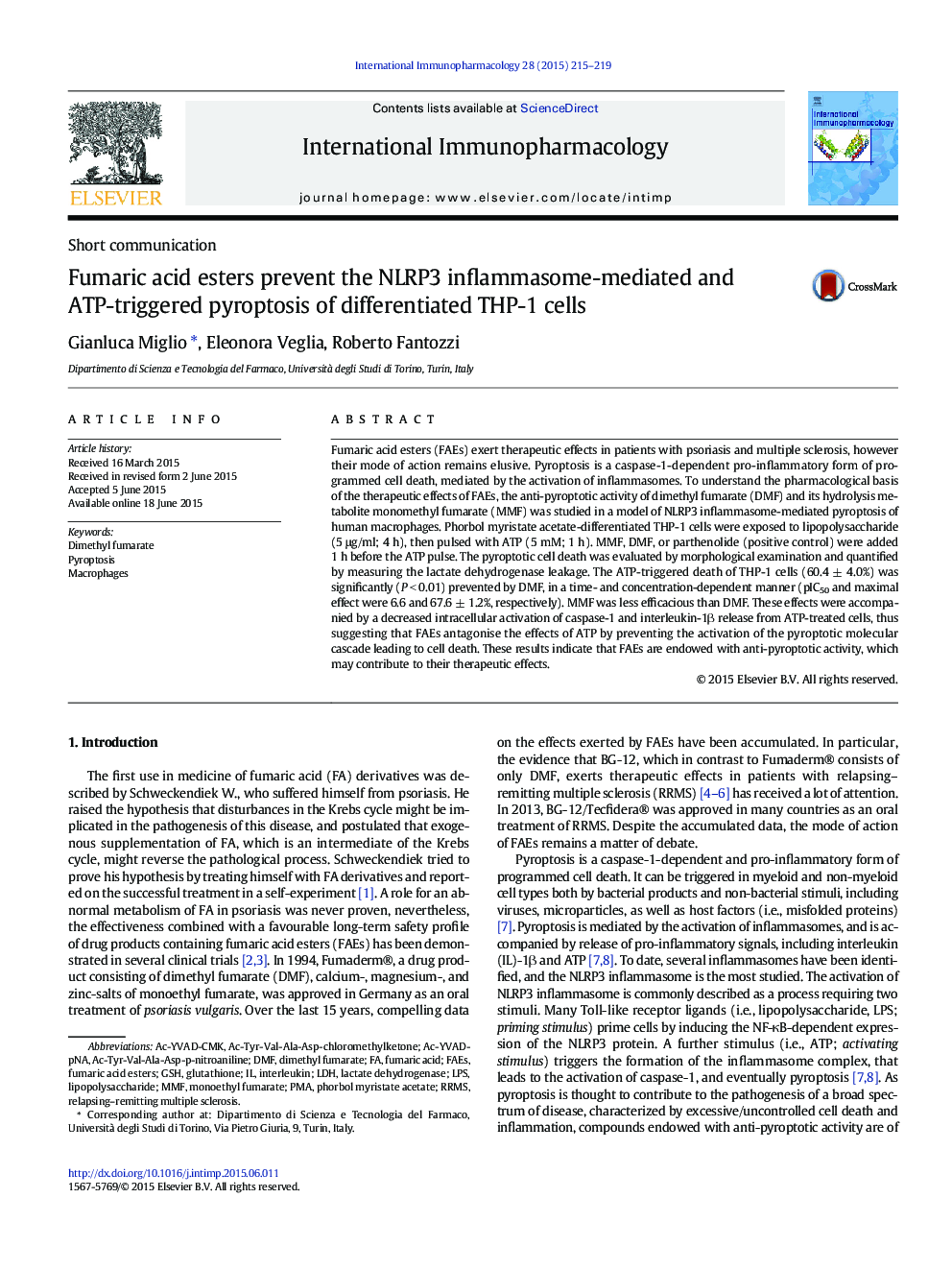| Article ID | Journal | Published Year | Pages | File Type |
|---|---|---|---|---|
| 2540447 | International Immunopharmacology | 2015 | 5 Pages |
•Dimethyl fumarate prevents the ATP-triggered pyroptosis of LPS-primed THP-1 cells.•Dimethyl fumarate prevents the ATP-triggered intracellular activation of caspase-1.•Dimethyl fumarate is more efficacious than its metabolite monomethyl fumarate.
Fumaric acid esters (FAEs) exert therapeutic effects in patients with psoriasis and multiple sclerosis, however their mode of action remains elusive. Pyroptosis is a caspase-1-dependent pro-inflammatory form of programmed cell death, mediated by the activation of inflammasomes. To understand the pharmacological basis of the therapeutic effects of FAEs, the anti-pyroptotic activity of dimethyl fumarate (DMF) and its hydrolysis metabolite monomethyl fumarate (MMF) was studied in a model of NLRP3 inflammasome-mediated pyroptosis of human macrophages. Phorbol myristate acetate-differentiated THP-1 cells were exposed to lipopolysaccharide (5 μg/ml; 4 h), then pulsed with ATP (5 mM; 1 h). MMF, DMF, or parthenolide (positive control) were added 1 h before the ATP pulse. The pyroptotic cell death was evaluated by morphological examination and quantified by measuring the lactate dehydrogenase leakage. The ATP-triggered death of THP-1 cells (60.4 ± 4.0%) was significantly (P < 0.01) prevented by DMF, in a time- and concentration-dependent manner (pIC50 and maximal effect were 6.6 and 67.6 ± 1.2%, respectively). MMF was less efficacious than DMF. These effects were accompanied by a decreased intracellular activation of caspase-1 and interleukin-1β release from ATP-treated cells, thus suggesting that FAEs antagonise the effects of ATP by preventing the activation of the pyroptotic molecular cascade leading to cell death. These results indicate that FAEs are endowed with anti-pyroptotic activity, which may contribute to their therapeutic effects.
